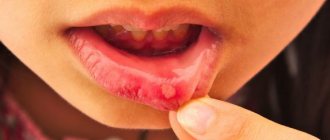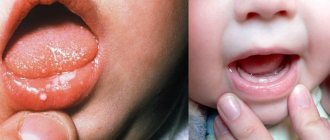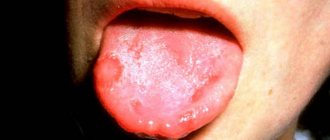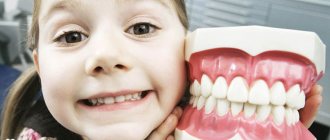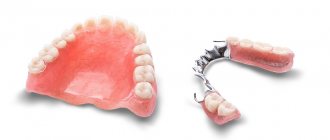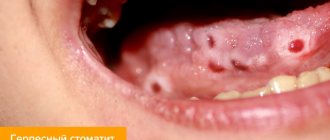Who's at risk
First of all, these are people who have the following unfavorable factors:
- Weakened immunity.
Defects in immune defense are the main factor predisposing to the occurrence of mycoses (fungal infections)1,2,4. The increase in their incidence in all countries of the world is due, first of all, to various types of conditions accompanied by weakened immunity1,[3]. It is not for nothing that “thrush” is called “the disease of the sick”1. Among its reasons:
- severe general diseases, for example, infectious2,3;
- cancer accompanied by sudden weight loss, lack of vitamins and microelements, requiring radiation and chemotherapy2,3;
- congenital and acquired forms of immunodeficiency, including AIDS2,3;
- endocrine disorders, for example, diabetes mellitus2,3.
- Dental diseases.
- Inflammatory , such as caries and its complications, gingivitis, periodontitis, periodontal disease and others2. The huge number of bacteria present during inflammation weakens the immune system and contributes to the proliferation of fungal microflora2. A diseased tooth with a carious cavity “infested” with microbes or a periodontal pocket filled with pus may well provoke the development of “thrush”3,[4].
- Non-inflammatory , which change the structure of the oral mucosa, for example, folded tongue and leukoplakia4. It is easier for fungi to attach to a damaged surface than to a healthy one.
- Constant dry mouth.
- Insufficient saliva (xerostomia), associated with a variety of problems, contributes to the development of oral mycosis4. Saliva contains many enzymes and antibodies that protect the mucous membrane from the action of microbes4. If there is little saliva, it dries out, its protection is weakened, which creates favorable conditions for the development of other infections.
- Defects in oral hygiene.
- Insufficient care . Problems more often arise in those who rarely brush their teeth and ignore the care of their tongue, interdental spaces and dentures4.
- Injuries . Sometimes the cause of an “outbreak” of oral mycosis is a too hard toothbrush or rough manipulation of dental floss and toothpicks. Injured gums are easy prey for fungi2.3,4.
- Incorrect use of removable dentures.
- Poorly customized removable dentures can rub the gums3,4, making them accessible to germs.
- No night break in using prostheses4. The gum located under the prosthesis is poorly enriched with blood, it lacks oxygen, it is not washed with saliva - this predisposes to the development of infection4.
- Improper care of dentures. Artificial teeth need care just as much as your own. Deprived of attention, they become covered with a thin film of various microbes, which then “attack” the gums.
- Age.
- Most often, doctors find “ thrush” in the mouth of infants and the elderly4. The reason for this is the imperfections of the immune system, which create favorable conditions for the proliferation of pathogenic microflora1,4,[5]. In addition, in childhood, dietary habits affect, and in old age – constant dry mouth and lack of teeth, forcing you to wear dentures1,5.
- Medicines
- Antibiotics. They kill not only pathogenic microbes, but also beneficial ones, thereby disturbing the balance of microflora and creating conditions for mycoses to flourish1,2.
- Drugs that inhibit cell proliferation (cytostatics). They interfere with the renewal of surface mucosal cells and disrupt local and general defense mechanisms against infections1,2.
- Immunosuppressive medications, which are prescribed when immune responses need to be suppressed, such as during transplantation1,2.
- Inhaled corticosteroids, which are used in the treatment of bronchial asthma and, due to their side effects, increase the susceptibility of the mucous membrane to infections2,[6].
- Unbalanced diet
- Lack of iron, vitamins C and B12, and folic acid1 in the diet, which leads to decreased immunity.
- Excess carbohydrates1,2. Excessive consumption of sweets, flour products, sweet fruits, starchy vegetables and other foods containing large amounts of simple carbohydrates contributes to the appearance of thrush in adults and children1,2.
Up to contents
A newborn has a white coating on the tongue - what to do?
The method of treating white plaque on a baby's tongue
depends on the cause of its appearance
. If the whitish spots are the remains of breast milk or formula, you need to clean the baby’s tongue. Use boiled water to rinse the baby's mouth with it after feeding.
If the defect is caused by disorders of the nervous system, contact a pediatric neurologist to identify the cause of the neurosis and take care of the baby’s peace of mind. There is no need to clean the tongue; the defect will go away on its own.
The appearance of whitish spots on the tongue may mean that the baby has digestive problems. Pay attention to your child's nutrition. The primary task is to eliminate dysbiosis by selecting a different formula during artificial feeding or adjusting the mother’s diet during breastfeeding. These actions are enough to eliminate the symptoms.
A white coating on the tongue of a newborn child may appear due to infectious diseases of the oral mucosa: herpes, scarlet fever, chicken pox. The disease occurs with elevated body temperature.
It is impossible to do without drug treatment. To avoid complications and the disease becoming chronic, the doctor may refer the baby for inpatient treatment.
Treating thrush
Treatment of a mild stage of thrush involves wiping the tongue with a soda solution. With its help, you can easily clean whitish accumulations and prevent the growth of bacteria.
Pay more attention to personal hygiene rules:
- For “artificial” babies, be sure to pour boiling water over the nipple and bottle before feeding.
- Clean and boil rubber toys regularly.
- Replace outdated nipples with new ones in a timely manner, taking into account the manufacturer's recommendations.
- When breastfeeding, keep your nipples clean. Before latching your baby, do not forget to wash your breasts with warm water. During the treatment of the disease, additionally treat it with soda solution.
- During lactation, try to avoid taking antibiotics, normalize your diet, fill it with vitamin products.
- After feeding, remove milk residues.
Important point! Do not kiss a sick baby on the lips, do not lick the pacifier - you risk becoming infected yourself and adding harmful bacteria and viruses with your saliva. Even after recovery, refrain from such actions.
A dense, cheesy coating on the baby’s tongue, palate and gums, and the appearance of whitish pimples indicate a complex stage of thrush. Drug treatment is carried out in strict compliance with the doctor’s instructions, without violating the regimen. Immunomodulatory and antifungal drugs are prescribed.
How to clean the tongue of a newborn
The most important factor influencing the speed of recovery from thrush is oral hygiene. Parents can clean the surface of their baby's tongue at home. Procedure:
- Make a weak 2% soda solution: 1 tsp. Dissolve baking soda in a glass of boiled water.
- Before cleaning your newborn's tongue, wash your hands with plain soap. Wrap a little sterile bandage around the pad of your index finger.
- Soak a bandaged finger in a soda solution and massage the problem surface with it. You need to clean your tongue as carefully as possible, without pressing.
- Repeat the procedure after each feeding, 4-5 times a day.
In addition to soda solution, you can clean the child’s damaged mucous membranes with medicinal gruel. To prepare it, mix 1/2 tablet of Nystatin (125 thousand units) with 1 ml of liquid vitamin B12. Apply the resulting mixture to the gums, palate, and plaque-covered surface of the tongue. Repeat the treatment after each feeding.
To remove unpleasant plaque, traditional medicine advises using honey and lemon juice. Be careful, such components can cause an allergic reaction in the baby and complicate treatment.
What does thrush look like in the mouth - its symptoms in adults
After Candida attaches to the mucous membrane, they multiply and “grow” deep into it2, causing inflammation, swelling and redness. There is a feeling of a “scalded mouth” and discomfort when eating and swallowing. There may be a change in taste and the appearance of a metallic, sour, salty or bitter taste1.
The proliferation of the fungus leads to the appearance of small white spots on the gums, tongue, inner surface of the cheeks and palate, reminiscent of curdled milk or grains of semolina porridge. Increasing in size, the “grains” turn into plaques, which, in turn, merge to form solid white films.
If plaques and films are removed with a spatula or a cotton swab (this does not require additional effort), then a bright red inflamed, eroded mucous membrane is revealed underneath them.
Oral mycosis can spread to the red border of the lips , causing redness, dryness and peeling. Seizures appear in the corners of the mouth: the skin becomes inflamed, covered with grayish-white scales and cracks5.
If candidiasis is not treated at this stage, the fungi “spread” to the tongue and pharyngeal tonsils.
When the tongue is damaged, glossitis develops - the tongue swells, its papillae are smoothed out, a characteristic white coating appears on its back and lateral surfaces1 - and when the pharyngeal tonsils are damaged, a sore throat occurs.
A sore throat caused by fungal microflora is very different from normal. With obvious inflammation of the tonsils and the presence of white films and plugs on them, there is no temperature or pain when swallowing, and the submandibular lymph nodes remain of normal size1.
Candidiasis can spread further - affecting the respiratory tract, causing pneumonia and blood poisoning, so it is important to stop the process at the very beginning.
Up to contents
Parting words for parents from doctors
A white tongue in a newborn as a symptom of thrush worries many parents. Timely elimination of the infection will relieve complications and the chronic form of the disease.
There are preventive measures, the observance of which will prevent the appearance of an unpleasant white coating in a one-month-old baby:
- Maximum hygiene and sanitation, especially in the first months after birth, until the child’s immune system gets stronger.
- After feeding, give your baby 1-2 tsp. boiled water, it removes the remaining milk.
- Strictly follow the pediatrician’s recommendations when creating your own diet (if breastfeeding), follow the rules for introducing complementary foods to your baby in order to maintain normal intestinal microflora and prevent dysbiosis.
- You should not lick your baby’s nipple, eat with one spoon, or kiss on the lips, so as not to transmit harmful bacteria and viruses with saliva.
- Buy your child separate dishes and cups.
- At the first symptoms of thrush development, or the slightest change in the color of the tongue, contact your pediatrician.
- The child sleeps with his mouth open, so if the room is hot, take measures to humidify the microclimate, ventilate the room more often and spend more time with the baby in the fresh air.
If you want your baby to be healthy, be attentive to such little things as changes in skin color and tongue. Don’t think about how to remove white plaque, focus your efforts on preventing its appearance.
Doctor Komarovsky’s opinion about white coating on the tongue of infants:
Features of “thrush” in the mouth in children of the first year of life
Mycoses in children, and very young ones at that, are not that uncommon. According to statistics, the first illness of a newborn in 33% of cases is associated with Candida fungi5. Moreover, they mainly affect the skin and tissues of the oral cavity5.
Why does thrush appear in the mouth of a child under one year old?
Mycotic stomatitis, or fungal inflammation of the oral mucosa, is the most common form of mycosis in children under one year of age1.5. How do mushrooms get into a baby’s mouth and why do they take root there? There are many reasons for this.
- Infection during childbirth.
During childbirth, the fetus comes into contact with the microflora of the woman’s vagina. If the mother suffered from vaginal candidiasis before giving birth and did not undergo the necessary course of treatment, the baby has every chance of inheriting a large amount of the causative agent of this disease1.5, which is a big burden for the immature immune system. According to statistics, on the first day of life, Candida fungi are found in the oral stool of 25-40% of newborns5.
- Unsanitary conditions.
Infection is possible due to violation of the rules of care for the newborn and defects in the hygiene of the nursing mother herself1,5. The infection is transmitted through dirty nipples and hands during feeding, through toys, nipples, dishes and linen.
- Imperfect immunity1, 5.
In a baby under one year old, the immune system is only “gaining experience”, because in the womb it did not come into contact with the infection and therefore “did not learn” to fight it.
- Prematurity and illness.
Candida can only harm a weakened body. The best conditions for their development are created if the birth occurs before term, the fetus is premature and/or has developmental defects or congenital diseases5.
- Nutritional features.
The threat is posed by regurgitation, the habit of putting the baby to bed with a bottle of milk and feeding with sweet artificial formulas. If milk remains in the mouth, which also contains a large amount of sugar, it becomes an ideal breeding ground for mushrooms.
- Features of salivation.
Due to physiological characteristics, the salivary glands of infants produce little saliva1 - they simply do not need it, since food is already liquid. At the same time, saliva has antifungal activity, and when there is little of it, the likelihood of oral thrush in a newborn increases1,5.
What does oral candidiasis look like in children?
The symptoms are the same as in adults: first, white “grains” appear on the mucous membrane, then “clumps” resembling curdled milk, and white films1. The difference is that the process is almost always accompanied by severe tissue swelling and the formation of numerous painful ulcers on the oral mucosa and tongue1,5. Therefore, due to oral thrush, infants often refuse to eat5.
In children, a fungal infection can affect not only the tonsils (tonsillitis), but also the pharynx (pharyngitis) and larynx (laryngitis). If the larynx is affected, the baby's voice becomes hoarse and low, and there is a risk of swelling of the airways and breathing problems1, 5.
Up to contents
Prevention of thrush in children
Preventive measures for the occurrence of candidiasis in children.
- In case of general or infectious diseases of the child, monitor the condition of the oral mucosa so as not to miss the appearance of thrush at the initial stage.
- Use antibiotics only when necessary. They are prescribed after conducting a general blood test of the child and obtaining the appropriate results. During the use of antibacterial drugs, fluconazole is prescribed. Its use is associated with disease prevention. The dose is prescribed by the doctor depending on the child’s body weight and the degree of risk of developing thrush.
Antibiotics should not be used unless prescribed by a doctor
- Timely detection of thrush in the mother of the child and application of appropriate treatment. Observation should be carried out from pregnancy and during breastfeeding.
- Screening for the presence of thrush in newborns who are at risk. These include children born during complicated labor, premature babies and those with any developmental abnormalities. This also includes children with birth injuries of the central nervous system, respiratory disorders, and encephalopathies. If the child’s mother is diagnosed with thrush and has chronic gynecological diseases, her child is also subject to mandatory examination for the presence of Candidiasis fungus. Such an examination is carried out in the first seven days of a child’s life using microscopic and bacteriological methods. If results indicate the presence of candidiasis, treatment with antifungal drugs is used. In addition to these examinations, stool samples are periodically analyzed for dysbacteriosis.
You need to check your baby regularly
Candidiasis is a very common disease in early childhood. But if you adhere to all preventive measures, it is quite possible not to encounter it.
Diagnosis of oral mycosis
Most often the diagnosis is obvious. However, in difficult situations, for example, in the presence of complications or individual intolerance to certain drugs, to confirm it, microscopic and cultural analysis of scrapings from the surface of the mucous membrane is used to determine the sensitivity of the microflora to antifungal drugs. Moreover, the mere presence of Candida threads in scrapings from the oral cavity is not always enough to make a diagnosis - fungi can be present in the mouth, but not cause any diseases. In such a situation, quantitative assessment is important, that is, counting the pathogen cells, and increasing their number when re-analyzed after 2-3 days.
Up to contents
How and with what to treat thrush in the mouth
Since candidiasis often develops as a secondary disease1, treatment of oral thrush requires an individual approach. What do we have to do?
1. Eliminate the factors that contributed to the appearance of oral mycosis
To do this you need:
- cure diseased teeth and gums, relieve exacerbation of chronic tonsillitis, pharyngitis;
- replace old “outdated” removable dentures with new ones, follow the rules for using and processing dentures;
- every time after using inhalers with steroid drugs (for bronchial asthma), rinse the mouth and gargle with water6;
- take antibiotics only as prescribed by a doctor;
- use toothbrushes with soft bristles, toothpastes, and mouthwashes with an anti-inflammatory effect1;
- follow the rules of caring for a newborn and feeding hygiene (if the disease manifests itself in an infant);
- use formulas that do not contain sugar for artificial feeding of a newborn.
2.Keep a diet
Meals include:
- limiting the daily intake of simple carbohydrates: sweets, flour products, potatoes, rice, legumes, boiled beets and carrots, sweet fruits and dried fruits;
- supplementing the diet with fresh vegetables with a lot of fiber, which contribute to the formation of normal microflora in the intestines and the formation of immunity9;
- consumption of sour berries and lactic acid products, which, due to their acid content, hinder the spread of fungi1;
- taking vitamins1 necessary for the normal functioning of the immune system;
- eating enough easily digestible meat and eggs for the normal functioning of the immune system.
3. Carry out local treatment
For oral thrush in both adults and children, treatment may include topical use of drugs with antifungal activity. Moreover, if the fungus affects only the oral cavity, local therapy may be sufficient5 to cope with the problem.
To treat the oral mucosa, today it is recommended5 to use hexetidine preparations, for example, HEXORAL® solution and HEXORAL® aerosol .
HEXORAL® with hexethidine:
- is active against biofilms[7] that are resistant to other drugs, and is harmful to fungi of the genus Candida, which cause oral candidiasis;
- has a high safety profile;
- can be used not only in adults, but also in children from 3 years old8;
- eliminates discomfort and relieves pain7;
- lasts for a long time, up to 12 hours[8];
- Available in the form of a solution and an aerosol, for comfortable use in any situation (for fungal laryngitis in children, it is especially convenient to use the aerosol form of the drug)2.
Important: doctors prescribe general antifungal drugs only if local treatment is ineffective and multiple relapses of candidiasis occur against the background of severe immunodeficiency and/or severe concomitant diseases. In these cases, HEXORAL® can be an addition to the main therapy1, 2, 5.
When treating oral thrush in newborns, there is often no need to use systemic antifungal agents1, 2, 5.
Up to contents
Treatment of thrush in children after one year
When a child develops a white coating after a year, soda solutions are used, which are also used for very young children. It is necessary to consult a doctor as soon as possible to prescribe treatment. Oral antifungal medications are usually prescribed.
Important! You should not decide to take such medications on your own.
It is very important to see a doctor right away
In addition, local procedures are carried out.
- Areas with a white coating are lubricated with medications: Nystatin ointment, iodine-containing Lugol solution or Miramistin antiseptic ointment.
"Lugol" - Instead of rinsing, you can rinse your mouth with a special solution if the child knows how to do this. The preparation recipe is as follows: an ampoule with vitamin B12, a crushed Nystatin tablet, 12 ml of pharmaceutical saline solution are mixed in a glass. The doctor may prescribe a complex of vitamins to be taken orally in the form of syrups.
Use saline solution
- Itchy areas of the skin around the mouth may appear. They are treated with Fenistil gel, which has antihistamine properties.
"Fenistil"
- For children after three years of age, antiseptic preparations in the form of aerosols are widely used. They are convenient for treating the oral cavity.
- When treating thrush, rinsing the mouth with tinctures of medicinal herbs: calendula, eucalyptus, sage has a good effect. They are prepared according to this recipe: a tablespoon of dried leaves is poured into 0.2 liters of boiling water and left for 30 minutes. Such tinctures promote rapid healing of cracks in the mouth, relieve itching and inflammation. Instead of herbs, you can use aloe juice, which is diluted with water and used as a mouth rinse.
You can rinse your mouth with tinctures of calendula and sage
All described methods of treating thrush in children after one year require a special diet. It is necessary to exclude all sweets and baked goods, dairy products, sweet teas and drinks. Meals should consist mainly of boiled eggs, semi-liquid porridges with water, lean meat, fish, and potatoes. Drinking plenty of fluids is recommended.
It is important to temporarily exclude dairy products and sweets from the diet of the baby and mother.
How to prevent the disease
So, what will help avoid an “outbreak” of fungal infection?
- Careful oral care.
- Solving dental problems and treating common diseases.
- Compliance with the rules of personal hygiene, hygiene of infant feeding and care1.
- Mandatory treatment of the disease during pregnancy and after childbirth1.
- Prophylactic use of antifungal agents, for example, during treatment with antibiotics and immunosuppressive drugs (radiation or chemotherapy)1.
Important: frequent outbreaks and severe cases of candidiasis are a reason to consult a doctor and undergo a full examination. Taking into account the fact that mycoses develop against a background of reduced immunity, they can act as a marker of serious diseases2. According to the World Health Organization, recurrent candidiasis should be a reason for testing for HIV.
Up to contents
